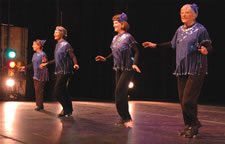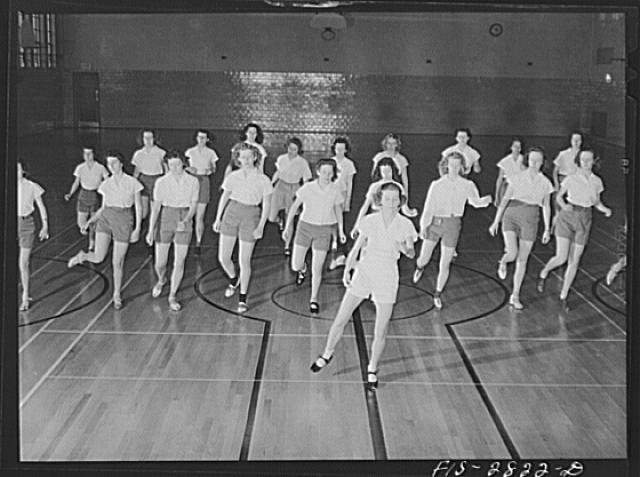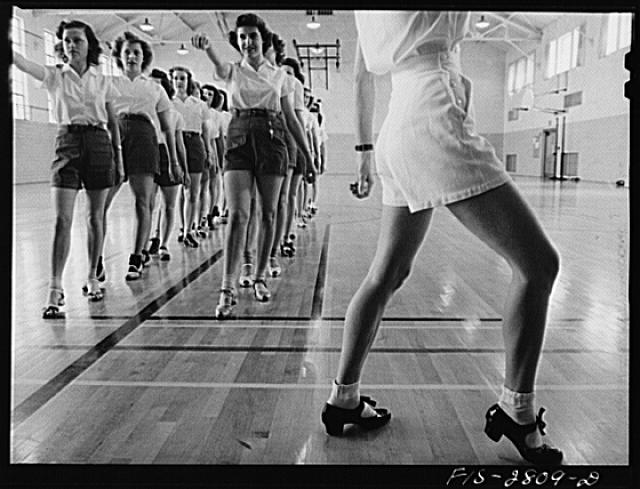Peggy Page
PEGGY PAGE has been instructing at Saratoga School of Dance since the 1980’s. She primarily teaches adults and is a master of tap.
Peggy has been dancing since the 1940’s and loves to help everyone keep moving and have fun doing it.
Put on some tap shoes and come join the fun.

There are shortcuts to happiness, and dancing is one of them. - Vicki Baum
Some History of Tap
Lotta (Mignon) Crabtree
She was born on Nassau Street in New York City in 1847 and raised in California during the Gold Rush. In those rough and wild times, Lotta learned ballet, fandangos, and the Highland fling (in those days, half of California's population was Irish) and she excelled at the jig.
She toured mining camps where she met an unknown African-American dancer who taught her breakdowns, soft-shoes, and buck- and-wing dances. With these basics added to her repertoire and with acrobatic flourishes, Lotta's fame spread throughout the country.
Her only competitors were the clog-dancing Worrell sisters: Irene, Sophie, and Jennie. But really, what kind of competition were they when it was discovered that Jennie's clogs had trick heels - hollowed out, tin-lined, and holding 2 bullets, which made it sound like she was dancing faster. Lotta became a toast of Broadway.
Some History of Tap
For More information go to the Library of Congress - Tap Dance in America: A Short History
Tap dancing grew out of a fusion of British and West African musical and step-dance traditions: the Irish jig and West African gioube (sacred and secular stepping dances) were blended into a unique American style that is constantly evolving.
Much like jazz, today's dancer develops an ability to look, listen, copy, creatively modify, and further perfect whatever comes at them. As they said at the Hoofer's Club in Harlem in the 1930s, where tap dancers gathered to practice their steps and compete: "Thou Shalt Not Copy Anyone's Steps— Exactly!"
Some History of Tap
Cora LaRedd
Cora was not only the most noted female soloist at the Cotton Club in the 1920s and 1930s, but also the most extraordinary jazz tap dancer in those decades due the her rhythmic brilliance, athleticism, and open sexuality. Singer and dancer, she performed for Charlie Dixon (Fletcher Henderson band), on Broadway (she was singled out as "a limber-legged dancing with wah-wah singing.") in the late 1920s.
Hailed as a song-and-dance diva, club audiences were dazzled by Cora.
The best example of LaRedd's dancing may be seen in the twelve-minute black-and-white musical short That's the Spirit (1933), regarded as one of the greatest jazz shorts ever made. Small and compact, showing a fiery vitality, she dances at shimmering speed; her low-heeled Mary-Jane shoes frame those fast feet; her triple-time steps and treble-roll steps - and she's singing, too. Up-tempo and swinging, this woman blasts off.
May all your shuffle hop steps dance lightly on your sole and may you never experience a cramp in your roll." Laurie Johnson
We would love to hear from you
-
Call us
(408) 868-1259
Ask for Saratoga School of Dance classes
-
Come find us at

